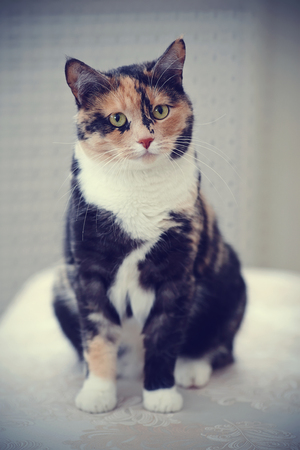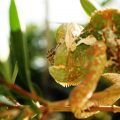Introduction to British Amphibians and Exotic Imports
For many UK pet owners, amphibians offer a fascinating window into the natural world—right from the comfort of home. Britain is home to several native amphibian species, each playing a unique role in our local ecosystems. Among these are the charming Common Frog (Rana temporaria), the elusive Smooth Newt (Lissotriton vulgaris), and the striking Great Crested Newt (Triturus cristatus). These native species are well-adapted to our temperate climate, often found in garden ponds or damp woodlands, delighting nature enthusiasts with their seasonal appearances.
However, there has been a noticeable shift in recent years as British pet lovers increasingly look beyond local wildlife, drawn by the allure of exotic amphibians from far-flung regions. Species such as the vibrant Axolotl (Ambystoma mexicanum), tropical Dart Frogs (Dendrobatidae), and colourful Fire-Bellied Toads (Bombina orientalis) have become popular choices for those seeking something a little different for their homes. The appeal lies not only in their unusual appearance but also in the opportunity to create bespoke habitats that bring a touch of the rainforest—or even underwater worlds—into everyday life.
| Native British Amphibians | Common Exotic Imports | |
|---|---|---|
| Examples | Common Frog, Smooth Newt, Great Crested Newt | Axolotl, Dart Frog, Fire-Bellied Toad |
| Habitat Needs | Pond, woodland, garden environments | Aquatic tanks, humid terrariums, specialist setups |
| Legal Considerations | Protected under UK law; wild collection restricted | Import regulations apply; some species require licenses |
| Cultural Appeal | Nostalgic, part of British landscape and folklore | Exotic beauty, conversation starters, unique care routines |
This growing interest highlights not only a love of animal companionship but also a desire for personal expression within British homes. Whether you are drawn to the familiarity of native species or captivated by the mystery of exotics, understanding their care and habitat needs is essential for responsible and enjoyable ownership.
Understanding Local British Amphibian Species
When it comes to caring for amphibians in the UK, appreciating the unique charm and requirements of our native species is the first step towards responsible pet ownership. Britain’s natural landscape is home to a delightful cast of amphibians, each with their own distinctive traits, behaviours, and preferred habitats. Let’s take a closer look at three of the most iconic native species: the smooth newt, common frog, and common toad.
Smooth Newt (Lissotriton vulgaris)
The smooth newt is the UK’s most widespread newt species. Elegant and understated, these creatures thrive in garden ponds and slow-moving waters during spring and summer, retreating to damp terrestrial hideaways as autumn arrives. Their subtle brown or olive-green skin is punctuated by tiny spots and a wavy crest during breeding season—a true sign of British springtime.
Natural Behaviours & Habitat
- Behaviour: Nocturnal; skilled at hiding under stones or logs.
- Habitat: Prefers still or gently flowing water with plenty of aquatic plants.
Common Frog (Rana temporaria)
A familiar face in countryside gardens across the UK, the common frog is instantly recognisable by its smooth skin, long hind legs, and varied colour palette ranging from olive green to russet brown. These adaptable amphibians are vital for controlling garden pests and are often spotted basking on damp lawns after rain showers.
Natural Behaviours & Habitat
- Behaviour: Excellent jumpers; hibernate beneath leaf litter or mud in winter.
- Habitat: Still ponds, marshes, and even shaded garden corners.
Common Toad (Bufo bufo)
The sturdy common toad stands out with its warty skin and sedate movements. Unlike frogs, they walk rather than hop—an endearing trait that has charmed generations of nature lovers. Toads are nocturnal hunters, favouring damp evenings to forage for insects and slugs.
Natural Behaviours & Habitat
- Behaviour: Nocturnal; returns faithfully to ancestral breeding ponds each year.
- Habitat: Woodland edges, gardens with compost heaps, quiet ponds for spawning.
Comparison Table: Key Features of British Amphibians
| Species | Appearance | Main Behaviour | Preferred Habitat |
|---|---|---|---|
| Smooth Newt | Slim, brown/olive with spots | Nocturnal; hides under debris | Ponds with plants; woodland pools |
| Common Frog | Smooth skin, varied colours | Basking; active after rain | Ponds, damp gardens, marshes |
| Common Toad | Warty skin, stout body | Nocturnal; slow walker | Woodlands; compost heaps; breeding ponds |
Cherishing these native amphibians means understanding their seasonal rhythms and natural spaces. Before considering any exotic additions to your home or garden pond, it’s wise—and deeply rewarding—to celebrate the marvellous diversity already thriving in Britain’s back gardens and wild corners.

3. Caring for Exotic Amphibians in the UK
Bringing an exotic amphibian into your British home is a delightful way to experience the wonders of the natural world, but it comes with unique responsibilities distinct from those of caring for native species. Understanding their specific needs is crucial for their health and wellbeing. Here’s what every UK pet owner should know:
Habitat Set-Up: Creating a Comfortable Home
Unlike British amphibians that thrive in our temperate climate, many exotic species originate from tropical or arid regions and require carefully controlled environments. This means investing in quality vivariums, heat sources, humidity control, and UVB lighting to mimic their natural habitats. Below is a quick comparison table highlighting the differences:
| Feature | Native British Species | Exotic Species (e.g., Axolotl, Whites Tree Frog) |
|---|---|---|
| Temperature | 10-18°C (natural room temp) | 22-28°C (additional heating required) |
| Humidity | Moderate (~50-60%) | High (60-80% for tropical species) |
| Lighting | No special lighting needed | UVB often essential |
| Water Quality | Pond/stream water, minimal filtration | Filtered, dechlorinated, monitored pH & ammonia levels |
Dietary Requirements: Feeding for Health
The diets of exotic amphibians are often more specialised than those of native newts or frogs. Many require live insects such as crickets, locusts, or even pinky mice (for larger species). Its important to research your pet’s exact dietary needs—some may need vitamin or calcium supplementation, especially if they are not exposed to natural sunlight.
Common Foods for Popular Exotics:
- Axolotls: Earthworms, bloodworms, specialist pellets.
- Dart Frogs: Fruit flies, springtails.
- White’s Tree Frogs: Crickets, mealworms dusted with supplements.
Welfare Considerations: Going Beyond the Basics
Caring for exotic amphibians in the UK also involves considering their mental stimulation and welfare. Enriching their environment with hiding spots, live plants, and climbing structures encourages natural behaviours and reduces stress. Regular health checks are essential—look out for changes in skin texture, appetite loss, or unusual lethargy.
A Note on Legal and Ethical Responsibilities
The UK has strict guidelines under the Animal Welfare Act 2006 regarding exotic pets. Always source your amphibian from reputable breeders or rescues who follow ethical practices. Never release non-native species into local waterways; this can disrupt ecosystems and is illegal under UK law.
4. Legal Requirements and Ethical Considerations
When it comes to keeping amphibians as pets in the UK, there is a clear distinction between native British species and exotic imports. Understanding the legal landscape is essential not only for compliance but also for ensuring that your choices as a pet owner are responsible and ethical.
UK Laws on Amphibian Ownership
The UK has established strict regulations governing both native and non-native amphibians. For native species—such as the Common Frog (Rana temporaria) or Smooth Newt (Lissotriton vulgaris)—the Wildlife and Countryside Act 1981 sets out clear protection measures. This legislation makes it illegal to capture, sell, or disturb certain protected amphibians without the appropriate licences. For non-native or exotic species, such as the Axolotl or Fire Salamander, additional importation and trading restrictions may apply under the Invasive Alien Species (Enforcement and Permitting) Order 2019. Always check whether your chosen species requires a special permit before bringing them home.
Key Legal Considerations at a Glance
| Species Type | Main Regulation | Permit Needed? | Notes |
|---|---|---|---|
| Native (e.g., Common Frog) | Wildlife & Countryside Act 1981 | Yes, for protected species | No wild collection; captive-bred only |
| Exotic (e.g., Axolotl) | CITES, IAS Regulations | Sometimes* | Check import/export rules; avoid invasive risk |
*Certain exotic species require CITES permits or are banned due to invasive potential.
Ethical Pet Ownership: More Than Just Following Rules
Beyond legalities, ethical considerations play a crucial role in amphibian care. Responsible pet owners should source amphibians from reputable breeders who prioritise welfare over profit, never from the wild. Providing an environment that meets natural habitat needs—such as appropriate humidity, temperature, and enrichment—is essential for wellbeing. Additionally, consider the ecological impact of introducing non-native species into local environments, even accidentally. Remember: what is legal is not always ethical, so thoughtful decision-making ensures both compliance and compassion in your home.
5. Creating the Ideal Home: British Weather and Amphibian Habitats
When it comes to keeping amphibians as pets in the UK, understanding how to recreate their natural habitat is key to their wellbeing. The UK’s weather—cool, damp, and often unpredictable—means pet owners need to be especially mindful of temperature, humidity, and shelter, whether caring for native species like the common frog or exotic favourites such as tree frogs and axolotls.
Adapting to the UK Climate Indoors
Most British homes are insulated and heated, but amphibians require specific microclimates that mimic their wild environments. For native species, such as the smooth newt or British toad, a simple garden pond or a ventilated terrarium with moist soil can suffice. However, tropical exotics need more controlled conditions—think heated tanks, UVB lighting, and misting systems.
Habitat Essentials Comparison Table
| Species | Temperature Range | Humidity Requirement | Shelter Type | Special Notes |
|---|---|---|---|---|
| Common Frog (native) | 10–20°C | Moderate (50–70%) | Pond, shaded rocks/plants | Winter hibernation outdoors possible |
| British Toad (native) | 8–18°C | Moderate (40–60%) | Damp soil, log piles | Loves cool corners in gardens |
| Tree Frog (exotic) | 22–27°C | High (70–90%) | Tall tank with climbing plants | Needs regular misting and heat mat |
| Axolotl (exotic) | 16–18°C | Aquatic, clean water | Aquarium with hides and plants | No direct sunlight; sensitive to heat |
Practical Tips for British Homes
- Temperature Control: Use thermostats for heated tanks; avoid placing habitats near radiators or draughty windows.
- Humidity Management: Native species tolerate standard room humidity; exotics may need daily misting or humidifiers.
- Shelter & Decor: Provide plenty of hiding spots using ceramic pots, bark tunnels, or live plants for both security and enrichment.
- Pond Safety: If keeping native amphibians outdoors, use mesh covers to protect against cats or birds and ensure gentle slopes for easy access.
- Aquatic Setups: For axolotls and aquatic frogs, install efficient filtration systems and regularly check water quality (pH, ammonia levels).
Cultural Touch: Embracing the British Garden Tradition
The classic British garden—with its ponds, shaded corners, and lush greenery—can be easily adapted to support native amphibians. For those who prefer indoor pets, creating a miniature “woodland nook” on a windowsill or in a conservatory brings a touch of countryside charm into your home while meeting your amphibian’s needs.
6. Responsible Pet Ownership and Biodiversity Protection
As UK pet owners, we play a crucial role in safeguarding our native wildlife while enjoying the companionship of amphibians—whether British or exotic. Responsible pet ownership not only ensures the well-being of your pets but also protects the fragile balance of local ecosystems. Here’s how you can make a positive impact:
Tips for Preventing Accidental Releases
- Secure Enclosures: Always check that tanks and vivariums are escape-proof to prevent unintended releases into the wild.
- Safe Disposal: Never release unwanted amphibians or aquatic plants into ponds, rivers, or nature reserves. Contact local rescue centres or responsible rehoming services instead.
- Double-Check During Garden Time: If you let your pets explore outdoor enclosures, supervise them closely to avoid escapes into the wider environment.
Recognising Signs of Ill Health in Amphibians
| Sign | Description | Action |
|---|---|---|
| Lethargy | Unusually inactive, hiding for long periods | Check temperature/humidity; consult a vet if persistent |
| Loss of Appetite | Refusing food for more than a week | Assess diet and habitat; seek veterinary advice |
| Skin Changes | Sores, excessive shedding, discolouration | Improve water quality; isolate and consult a specialist |
| Abnormal Swimming/Movement | Trouble staying upright or erratic movements | Review enclosure safety; urgent vet visit recommended |
Supporting UK Biodiversity Through Responsible Practices
- Avoid purchasing wild-caught amphibians. Opt for captive-bred pets from reputable UK breeders who prioritise animal welfare.
- If keeping exotics, never co-house with native species to reduce disease transmission risks.
- Educate family and friends about the importance of protecting local habitats and respecting native species.
Biodiversity-Friendly Pet Keeping: Your Checklist
| Biodiversity Action | Your Progress (✔/✘) |
|---|---|
| Sourcing pets responsibly (captive-bred only) | |
| No wild releases—rehoming unwanted animals properly | |
| Regular health checks and prompt vet visits when needed | |
| No mixing of exotic and native amphibians at home |
Caring for amphibians is a uniquely rewarding part of modern British home life—but it comes with responsibility. By following these steps, you’ll be supporting both your beloved pets and the rich biodiversity that makes the UK so special.
7. Summary and Key Takeaways
Looking after amphibians in the UK—whether native or exotic—requires thoughtful consideration of both their welfare and the health of our local ecosystems. Here’s a concise recap to empower every British pet owner with essential knowledge and confidence:
Aspect |
British Amphibians |
Exotic Species |
|---|---|---|
Legal Considerations |
Protected by UK wildlife laws; avoid wild capture. | Check import regulations and legal status before purchase. |
Habitat Requirements |
Mimic natural British environments; cool, damp settings are ideal. | Research species-specific needs, which may include higher humidity and warmth. |
Diet & Nutrition |
Native diet includes insects and invertebrates found locally. | Diverse requirements; often need specialist food sources not found in the UK. |
Ecosystem Impact |
Less risk if cared for responsibly; never release into the wild. | Potential to disrupt local habitats if released; strict containment is vital. |
Health & Welfare |
Regular vet checks and monitoring for disease are essential. | Higher risk of imported diseases; quarantining new arrivals is recommended. |
By staying informed about these differences, UK pet owners can make responsible choices: select the right species, provide suitable habitats, and prevent negative impacts on British wildlife. Responsible amphibian care is not only rewarding but also crucial in preserving our country’s unique biodiversity. Let this guide serve as your foundation for thoughtful, ethical, and enjoyable amphibian ownership at home.


